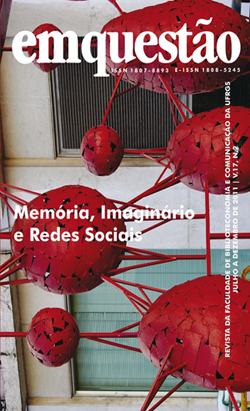El Análisis se concentra en los metadatos a la luz de la norma MTD-BR
Palabras clave:
Metadatos.Dublin Core. ETD-MS. MTD-BR. BDTD. NDLTD.Resumen
La dificultad de acceso y recuperación de información, causado por el aumento del volumen de información disponible sin una representación estructurada, es una de las consecuencias del uso cada vez más frecuentes de la World Wide Web (www). Como parte de esta realidad, las bibliotecas digitales tratan de garantizar la interoperabilidad a través de la descripción física y el contenido de sus artículos, la adopción de normas específicas para los metadatos. En este contexto, el presente artículo se describe la investigación desarrollada en la Maestría en Ciencias de la Información de la Universidad Federal de Santa Catarina, que analizó el contenido de los metadatos de las tesis de la Universidad de Santa Catarina - UDESC, pondrá a disposición de las Tesis de Biblioteca Digital y Disertaciones-BDTD a fin de verificar que están siendo informados, de conformidad con la norma MTD-BR y así contribuir a la localización y recuperación de las tesis de la institución. Como los procedimientos metodológicos, el enfoque de la investigación fue exploratoria y se analizaron los metadatos cualitativa como cuantitativamente. El enfoque cualitativo, basado en las recomendaciones del MTD-BR estándar para el contenido de elementos de metadatos y sus atributos y enfoque cuantitativo permitió la comparación de la cantidad de metadatos y mal informado incorrectamente. Los resultados nos permitieron hacer sugerencias para mejorar el contenido de los metadatos para UDESC informó de BDTD y concluyó que la biblioteca digital de UDESC, a pesar de una buena calidad para la realización de los metadatos, podría mejorar este procedimiento en favor de la interoperabilidad y la recuperación de la información .Descargas
Descargas
Publicado
Cómo citar
Número
Sección
Licencia
Derechos de autor 2010 Jaqueline Costa Alves, Lígia Maria Arruda Café

Esta obra está bajo una licencia internacional Creative Commons Atribución 4.0.
Autores que publican en esta revista están de acuerdo con los siguientes términos:
Los autores mantienen los derechos autorales y ceden a la Revista el derecho de la primera publicación, con el trabajo licenciado bajo la Licencia Creative Commons Attribution (CC BY 4.0), que admite compartir el trabajo con reconocimiento de la autoria.
Los autores tienen autorización para asumir contratos adicionales en forma separada, para la distribución no exclusiva de la versión del trabajo publicada en esta Revista, como para publicar en repositorio institucional, con reconocimiento de autoria y publicación inicial en esta Revista.
Los artículos son de acceso abierto y gratuitos. Según la licencia, usted debe dar crédito de manera adecuada, brindar un enlace a la licencia, e indicar si se han realizado cambios. No puede aplicar términos legales ni medidas tecnológicas que restrinjan legalmente a otras a hacer cualquier uso permitido por la licencia.









